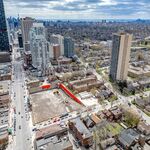ShonTron
Moderator
Member Bio
- Joined
- Apr 24, 2007
- Messages
- 12,405
- Reaction score
- 9,063
- Location
- Ward 13 - Toronto Centre
The same article, with a similar "crackdown" headline appeared in the Star.
Great. Another opportunity for drivers to bash cyclists, cyclists to bash drivers and cyclists to complain about other cyclists. No money for bike infrastructure, or even a plan to pave the shoulders of non-freeway provincial highways. Nice move, Glen Murray.
By the way, next week is back to school. That means that the police will do their same "blitz" at the four-way stop at Beverley and Baldwin, ticket some really stupid cyclists, and call it a job well done.
Great. Another opportunity for drivers to bash cyclists, cyclists to bash drivers and cyclists to complain about other cyclists. No money for bike infrastructure, or even a plan to pave the shoulders of non-freeway provincial highways. Nice move, Glen Murray.
By the way, next week is back to school. That means that the police will do their same "blitz" at the four-way stop at Beverley and Baldwin, ticket some really stupid cyclists, and call it a job well done.
Last edited:




